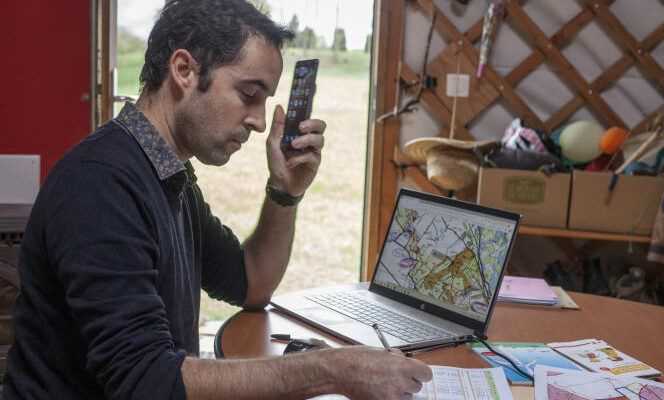Antoine Rigalleau’s Peugeot 307 displays 316,000 kilometers on the odometer. For nearly six years, this former professor of history and geography has been tirelessly crisscrossing the borders of the Indre, Cher and Nièvre, to the gates of Morvan. On board, Thibault (the people named whose name does not appear wished to remain anonymous), engineering student and trainee. In their bags, bundles of maps and satellite photos: an anthology of rural areas far from Natura 2000 areas and other natural areas of ecological, floristic and faunistic interest. Away, too, territories with appellations of controlled origin, prestigious vineyards, picturesque countryside where neorurals like to settle.
Mr. Rigalleau is a land prospector in agrivoltaics, after having worked for five years in wind power, which arouses many constraints and opposition. At the rate of three to four days every three weeks on behalf of an Ile-de-France promoter, he sets out to conquer agricultural land likely to accommodate suspended solar panels. To respect commercial secrecy, his employer accepted our presence on condition that we remain evasive on the places prospected and that we do not reveal the identities of the people we meet.
To achieve the photovoltaic deployment objectives of the multi-year energy program (PPE), the sector must find land to produce 44 gigawatts (GW) – 12 GW for the moment already installed – or 44,000 hectares of panels by 2028. Nièvre alone is targeting 2,000 hectares of panels. Because the government wants to limit the artificialization of soils and that old industrial wasteland is a rare commodity – the Ministry of Ecological Transition announced on Wednesday 3 November its desire to equip wasteland for the production of 8 GW of wasteland – Agrivoltaism is an increasingly explored path.
“1,000 euros per hectare and per year”
Generally, Mr. Rigalleau is received in the kitchen. The host and the guest get to know each other by talking about the weather. During the meetings, he developed educational brochures, with photos and simplified sketches. He completes them with well-honed formulas: “We are proposing to rent the air volume above your plots for thirty years” is one of them. Then he talks about money: “1,000 euros per hectare and per year: 300 for the owner, 700 for the operator. “
This sum concerns the breeding meadows, which he covets as a priority, where large adjustable panels can be installed at the top of posts three to four meters high, on 50% of the surface, and without disturbing the animals on the ground. . For fields of large crops, only 20% of the surface is considered in panels, or 400 euros per hectare and per year. Under current legislation, panel installations lose eligibility for Common Agricultural Policy (CAP) aid, making the argument more complex to sell. Mr. Rigalleau still has to complete projects of several dozen hectares: “That way, even moving 15 km away from the network to connect to, it remains viable. “
You have 70.06% of this article left to read. The rest is for subscribers only.
